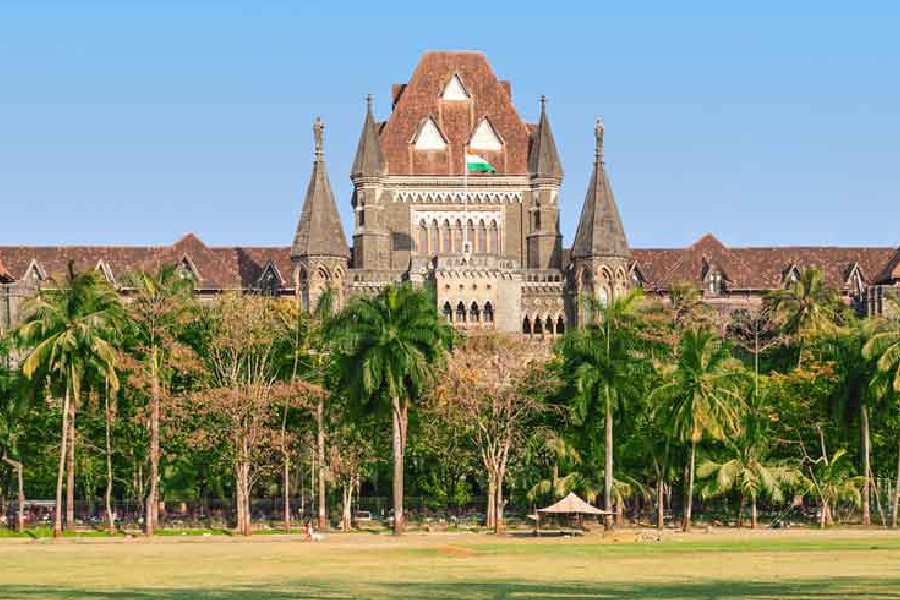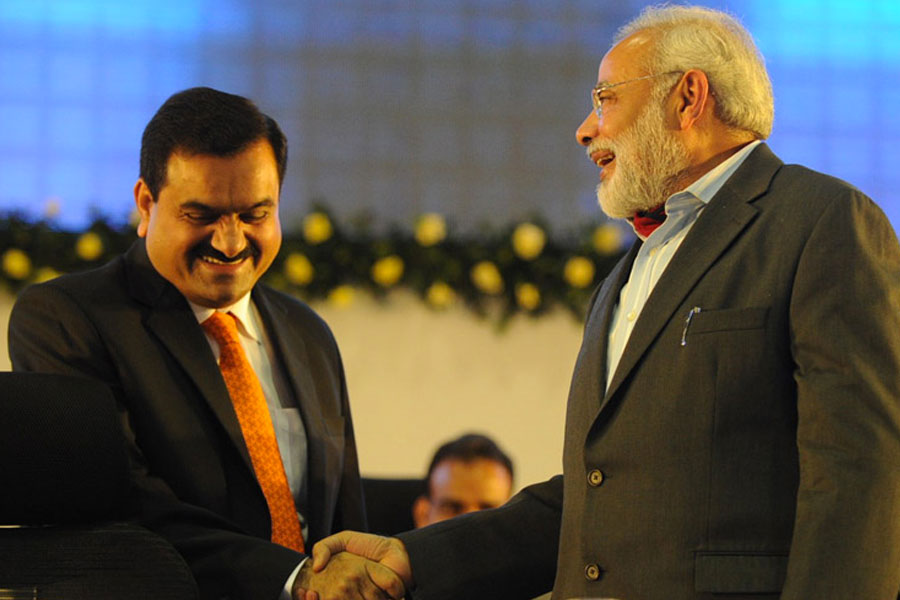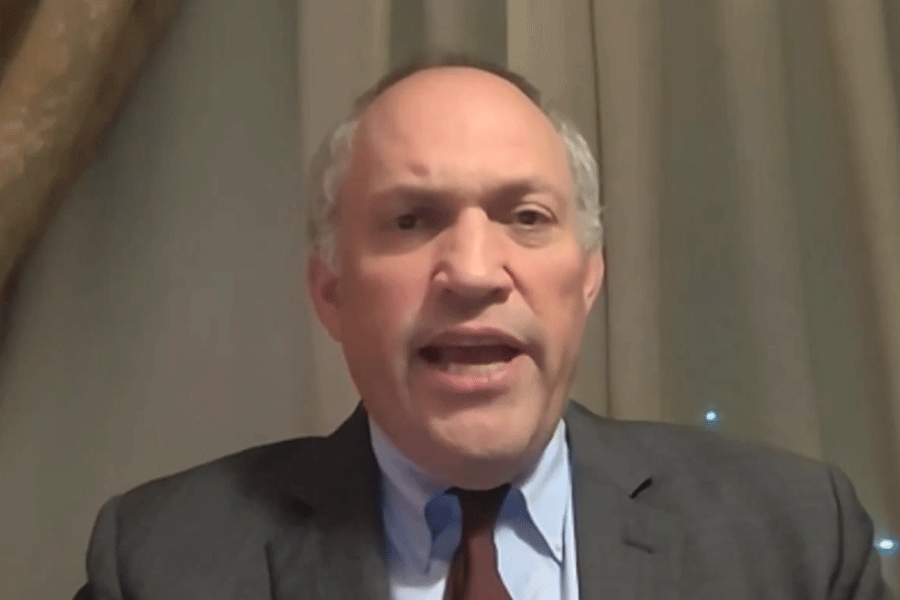|
|
| in good faith: Actor Arunima gearing up for Lakshmi puja |
It’s Saturday, the day of the Goddess Kali. At Calcutta’s Kalighat temple, among the holiest places of worship in the country, a queue of people waiting for a darshan or a glimpse of the deity stretches from the entrance, snakes along the wide and winding cobbled temple yard and spills onto the street outside, nearly obstructing traffic.
Among the devotees waiting impatiently under the sizzling summer sun is a young woman who, in slit denims and silver danglers, sticks out like a sore thumb in the mostly traditionally attired crowd. But Dia Mukherjee, 28, couldn’t care less as long as she catches a glimpse of Ma Kali before catching the evening flight to Mumbai, where she works in an advertising agency. “When I come home, I try and visit the temple at least once to get Ma’s blessings,” she says.
Mukherjee is representative of the many educated and urban young in West Bengal who are showing signs of a religious bent of mind or a penchant for rituals. Deep Banerjee, a 31-year-old doctor, has pasted a stick-on swastika sign on the windscreen of his car for “good luck”. On exam days first-year engineering college student Rupali Das wears her green Ganesh T-shirt for luck. Every time she crosses a temple, however small, 24-year-old Lipika Bose, a social worker, bows in reverence because she doesn’t want to “incur the displeasure of the deity”.
“Yes, it is quite true that today’s Bengali youth is no longer afraid to express his or her religious self,” says Ajoy Kumar Mitra, president of the Kalighat Temple Committee. “Compared to the previous generation, they are less inhibited and less embarrassed to appear God-loving.” And Mitra stresses that he is talking about urban, educated youth.
At least one out of every two temple-goers, Mitra stresses, is a youth ? the footfall of the young was “a lot less”, he adds, even a decade ago. And Swami Ritananda of the Ramakrishna Mission at Golpark in Calcutta points out that the number of young men choosing the life of a hermit is also on the rise. “Twenty years ago, the Mission would see about 20 young boys wishing to be initiated into the life of a sanyasi. Last year, we had around 50 young boys choosing the life of renunciation and sacrifice.”
The Ramakrishna Mission conducts classes and workshops on religion for the young which, according to Dipsankar Bhatta, a volunteer at a workshop, “are extremely popular”. For instance, the 300 seats for the annual Value Education Workshop for senior students which teaches, among other things, the art of meditation and the importance of values in life, are lapped up by school and college students between the ages of 18 and 30. Says Ishani Banerjee, a class 12 student of Behala High School, who enrolled in this year’s programme, “I find the stories about the lives of great people very inspiring.”
Nor is the trend limited to Hindus. The Shahi Imam of Tipu Sultan Mosque in Calcutta points out that “compared to the past, a lot more younger people are coming to me with queries about religion, rituals, etc.” He explains, “The Muslim youth wants to learn about Islam to counter claims by terrorists that theirs is the true version of Islam.”
Or, as Dipali Mukherjee, 27, says, she “was born a Hindu, but (is) in love with Christ.” Her mother is a devout Hindu, but Dipali finds solace in Christianity. “I like the serenity of Church rituals,” she says. Shreya Raj, on the other hand, is only 12 ? and already into both Hinduism (her mother’s religion) and Christianity (her father’s). “My daughter, being so young, has an amazing capacity to embrace both religions. She likes to go to church. My wife does puja at home but when she is not there, my child takes over,” says Sanjay Raj, her businessman father.
A snap survey of a small section of the youth conducted by The Telegraph underscores the trend. Only 16 per cent, when asked if they were religious, said no. Eighty-four per cent said they sought solace in religion. And 54 per cent said they often visited a place of worship.
Religion, clearly, is in the air. For some, it translates into ritualistic practices, and for others, it is often a way of life. Not surprisingly, “what is religion” figures high on the list of topics that class XI and XII boys want to discuss, along with such subjects as “How to woo girls” in the Value Education classes of Brendan MacCarthaigh, a teacher at St Joseph’s College and counsellor at Serve, a child counselling centre.
It wasn’t always so. When Calcutta academic Prasanta Ray was a student of political science in Presidency College in the Sixties, he maintains that the ambience was different. “We were more secular. We grew up being exposed to a Marxist critique of religion ? religion as a source of oppression, a justification for exploitation,” says Ray, who teaches political science and sociology at Presidency. “In fact, in Bengal, education in the social sciences was modelled on the western value system ? rationality, objectivity, scrutiny, secularity.”
But there has been a change in recent times. Ray, who has been teaching for 40 years, holds that his students are a lot more religious today than they were earlier. “The secular understanding of religion is that it is basically a human creation. In my classrooms I initiate discussions on this issue. And I have noticed that the majority of students argues that there is a God,” he says. “It is now a rare experience, in fact, to have a student support the secular point of view.”
The young, going by The Telegraph’s random survey, seem to be doing their own mix-and-match in religion. They take what suits them and discard what doesn’t. Most tend to stress that they are not into deep discourses. But a small prayer now and then, an offering of flowers and invoking the name Ganesha at the right moment can only help, they argue. Some observers also argue that the shift towards religion is only skin deep ? scratch further and you’ll find that the young pay obeisance more to rituals than to religion.
“They are a study in contradictions. While they hold unconventional views on topics such as sex and drugs and lead unconventional lifestyles, they are conventional in their attitudes about faith and religion,” says Ray.
Twenty-one-year-old Shefali Ray typifies the changing attitude. The commerce graduate, who is in search of a job, is not ashamed to admit that she has consulted an astrologer and got herself an astrological gem to help her in her career. “If it works, it works,” she says, matter-of-factly. “If it doesn’t, it doesn’t. But it’s definitely worth a try. I’m not discounting anything.” And while she doesn’t regularly go to the temple, she likes to light incense sticks in her room and meditate.
Nabonita Sen, a 26-year-old chartered accountant, formerly with Price Waterhouse Cooper, has her own take on religion and ritual. She is getting married on June 10 ? and is not going in for any of the traditional rituals: conch shell or coral bangles and vermillion dots that Bengali brides usually don. But Nabonita is not averse to offering flowers during anjali and is particularly fond of Saraswati ? because, she says, the goddess is educated and independent.
Mitra of the Kalighat Temple believes that the turn towards religion is a reflection of the Bengali youth’s desire to return to his or her roots. “Young Bengali intellectuals of the previous generation had by and large distanced themselves from religion,” he says.
|
Mitra believes that they had their reasons. The plethora of so-called gurus and godmen ? from the 1960s to 1980s ? put people off religion, he argues. “Yesterday’s youth wanted to stay away from this brand of Hinduism. But the current generation of youngsters has realised the depth of their own ancient culture,” he says. “They see that even in the West there is great respect for eastern principles such as yoga and ayurveda, which are intrinsically associated with Hindu philosophy. So there is a growing desire among the youth to understand their own culture and religion.”
Not everybody agrees. “Dissociating yourself from the frauds and fakes in the business of Hinduism was only one of the reasons the Bengali intellectual youth distanced themselves from religion,” says Probir Ghosh of the Rationalist Society of Bengal. “Rational thought was what led the thinking person to abandon religion,” he stresses.
Some, like Ray, believe that a turn towards religion underscores rising levels of insecurity in society. “Family support is dwindling. Children do not have the same network of family support that the previous generations enjoyed. They sometimes miss out on the protection of parents who work outside the home. They don’t even have a large number of siblings. And in this competitive and consumerist world today’s kids also have fewer friends.”
Sometimes, though, religion is a fiercely personal interpretation of a traditional belief. To 23-year-old Gaurab Chatterjee, a drummer with a popular Bengali music band, lord Shiva is cool and carefree. “He’s laidback and has loads of attitude. He smokes pot and is powerful.” But Chatterjee doesn’t go to a temple.
That could have something to do with the fact that his mother, Minoti Chatterjee, is a bit suspicious of religion. “History has proved that it breeds discord and disharmony. I believe in what John Lennon says in the song Imagine ? no country...and no religion.”
In an age where Lennon is passe, few among the young would be ready to accept Minoti Chatterjee’s line of thought. And that, Ray stresses, is because radical ideas are on the decline. “Radical ideas receded with the advent of a consumerist culture, where higher ideals and values are by and large swept under the carpet ? with the reform of society being secondary to the fulfiling of the individual’s personal and material needs,” he says.
There was a time, he argues, when people were afraid of being laughed at or ridiculed; being religious was a mark of being a conservative person, given to superstition. “But today students are not ashamed or afraid to express their religiosity. They are more open to ideas,” says Ray.
There is, clearly, an open sense of give and take in the current definition of being religious. Swaraj Mallik, a 28-year-old assistant sales manager in a Calcutta firm, has his own reasons for occasionally visiting a temple. “Hard work is not enough to achieve things in life, you need help from God to get all that you desire,” he says. Meena Ghosh, a 27-year senior bank officer, on the other hand, says she is grateful to God for “giving me all things one could ask for in life”. She describes herself as religious, but not a fanatic.
And Arnab Banerjee, a 29-year-old Calcuttan, puts the issue in perspective. Employed at an insurance company, Banerjee stresses that he is not very religious, rarely visits a temple but believes in God. “You have to have faith in something,” he says. “I guess God is a good option.”












